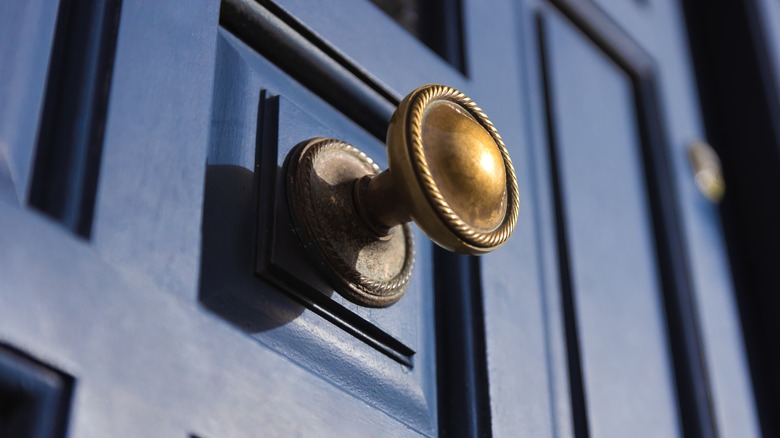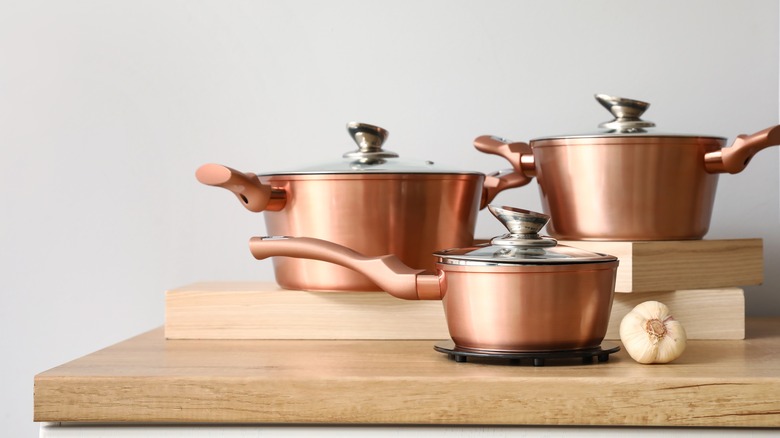Here's How To Determine Whether Your Copper Hardware Is Real Or Fake
Copper is a stunning material commonly used in various household items and hardware, like the kitchen sink. With the increase in its popularity, there's also a surge in counterfeit products pretending to be made from this valuable metal. You might wonder: "Is my copper hardware genuine or just a clever imitation?" This question is crucial, especially when considering the difference in quality, longevity, and value between different materials. Understanding how to differentiate real copper from its less authentic and subpar counterparts involves knowing what to look for and performing a few simple tests, like checking the weight and color of your copper item, inspecting for any inconsistencies, and conducting tests (such as the magnet test).
Generally speaking, copper is highly durable — it can stand up to the rigors of daily use and promises a long lifespan for your hardware. Furthermore, its natural antimicrobial properties work continuously to kill bacteria, offering you an extra layer of protection in your home and proving its utility beyond just aesthetics. Even though some fakes can be incredibly convincing, this basic understanding of copper's unique properties can also help you unveil the truth. Whether you're a savvy home decorator, a dedicated DIYer, or just someone wanting to ensure the integrity of your hardware, this guide will help you determine if your copper is the real deal or merely a facade.
Physical inspection of your copper hardware
First, take a close look at the piece you're investigating. Genuine copper is heavy, with a density of approximately 8.96 grams per cubic centimeter, which much heavier than other materials, such as aluminum. Pick up your hardware and feel its weight. If it feels surprisingly light, it may not be genuine copper. Next, inspect the color. Real copper has a unique reddish-brown hue, unlike brass, which tends to have a brighter yellowish tint.
The next inspection involves using a common household item: vinegar. As mentioned, the color of copper can change over time due to oxidation, a process that causes a green patina to form on the copper's surface. This patina is often a good sign that your hardware is made of real copper. You can test your hardware yourself by applying a small amount of vinegar to a non-visible part of it, then waiting a few minutes. If it's genuine copper, the vinegar will cause the area to turn green. Wipe off the vinegar immediately after the test to prevent any unnecessary damage or discoloration. Lastly, check for any inconsistencies in the material. If your copper items were marketed as handcrafted, they might show tiny imperfections or variations in texture and color, unlike counterfeit products that are mass-produced and uniformly perfect.
Other simple tests to conduct
After the physical inspection, you can perform a few simple tests to further verify the authenticity of your copper hardware. One easy method is the magnet test. Copper is not magnetic, so if a magnet sticks to your hardware, it's not made of pure copper. However, this test isn't foolproof, as some fake copper items might also be non-magnetic. Understanding if your copper is real or fake can also be as simple as listening. Conduct a sound test by lightly striking your item with an object (such as a wooden utensil) that won't cause damage. Genuine copper produces a soft sound. Try tapping a known copper item for a more accurate comparison and listen for a similar sound. Remember to strike gently and in a safe location to avoid causing any damage.
Lastly, you can also conduct the scratch test. However, this should be your last resort, as it can potentially damage the item. Find a hidden spot on your hardware and gently scratch it. Underneath the surface, real copper should reveal the same reddish color. However, be careful not to scratch too deeply; you could harm the item and reduce its value. Remember, it's always wise to conduct these checks before making a purchase so that you can confidently discern between real copper and a cleverly disguised fake.


